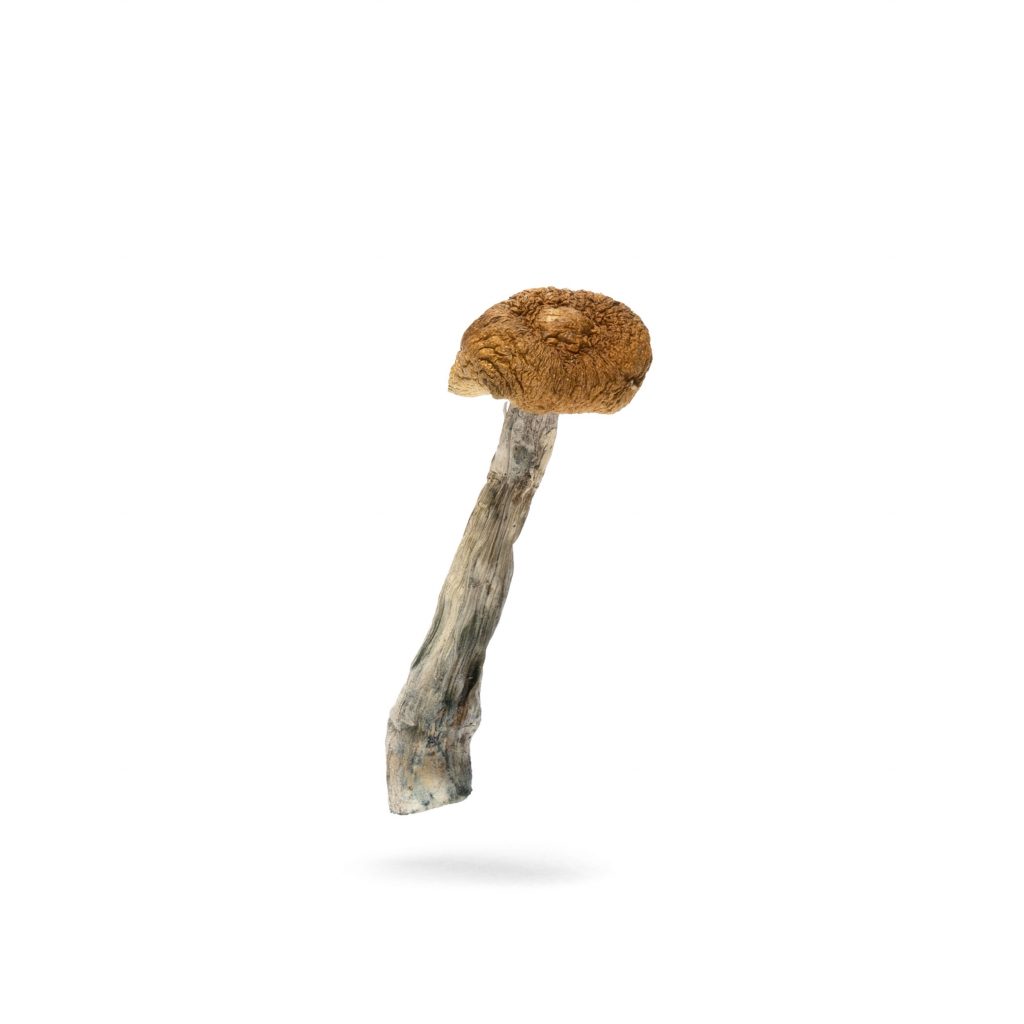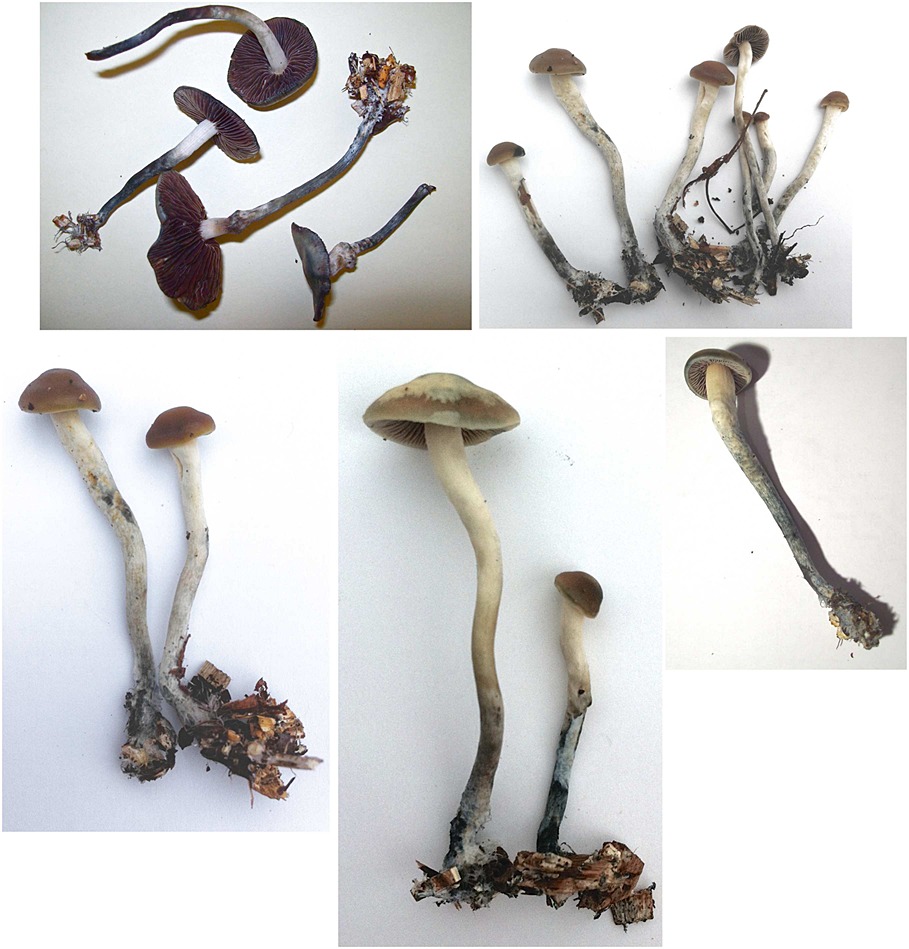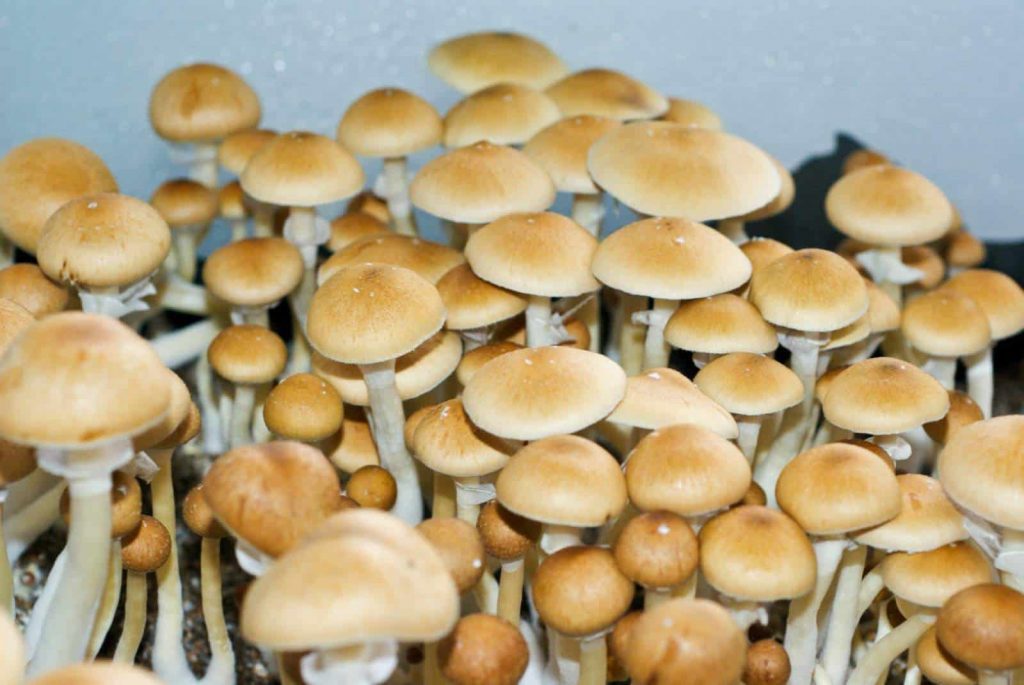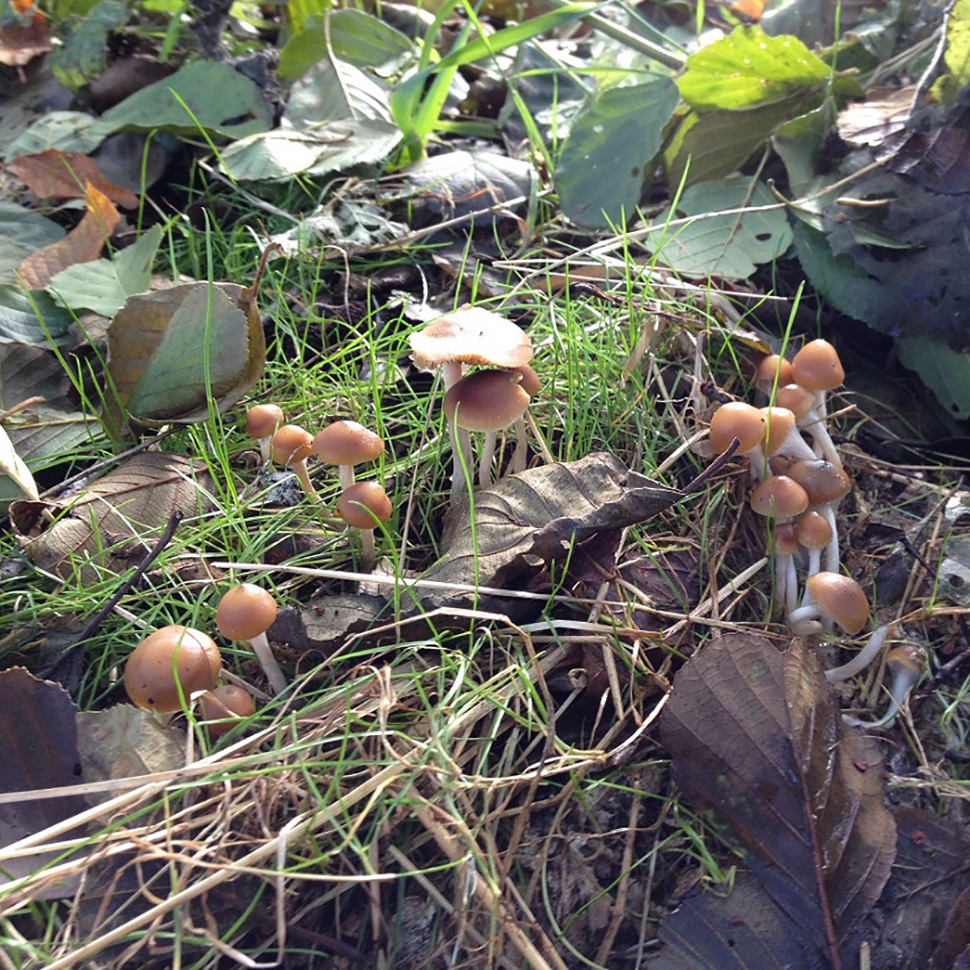Sixty years ago, the ethnomycologist R. G. Wasson discovered an ancient mushroom cult in Oaxaca, Mexico. The famous mycologist R. Heim classified the psychoactive mushroom species in the genera Psilocybe and the eminent natural product chemist Albert Hofmann published the isolation, structural elucidation and synthesis of the new alkaloids psilocybin and psilocin in 1958. These indole derivatives were also found in a number of other Psilocybe species encountered in Asia and Europe and it is now known that other psychoactive species exist in the genera Pluteus, Panaeolus, Inocybe and Gymnopilu.
Hallucinogenic mushrooms of the main genus Psilocybe are known from countries with a wet climate. Besides the cultivation of subtropical species such as Psilocybe cubensis (Earle) Singer, a range of other naturally growing species are commonly found in Europe. They deserve increasing attention because some species can yield up to thousands of fruiting bodies in relatively small spaces.
The species Psilocybe semilanceata (Fr.) Kummer contains comparatively high amounts of psilocybin (around 1% dry weight) and some baeocystin, which is the monomethyl analogue of psilocybin,whereas the phenolic compound psilocin is only found in traces in these mushrooms .This small species usually grows in only scattered patterns on pasture. In recent decades, however, the psychoactive mycoflora of Europe has been transformed deeply. In 1946, E. Wakelfield described a new species from Kew Gardens (London, UK) that became known as Psilocybe cyanescens Wakefield.This mushroom typically exhibits strong blueing behaviour after bruising and also spontaneously during ageing. This species grows on wood chips and rich compost derived from plant residues. It has been suggested that these mushrooms grew adventitiously in botanical gardens following importation of plant material from foreign countries. In 1962, this species was also found in the Pacific Northwest, USA and Kubicka first discovered other blueing mushrooms in woods near Sazava (Czech Republic) in 1942. The species was named Psilocybe bohemica Sebek and further descriptions are available in the Czech mycological literature.

The collections obtained from various species were compared with the new Psilocybe germanica and samples were deposited in the herbarium of the botanical museum in Berlin/Dahlem (B). Over the years, many hundreds of fresh fruit bodies were encountered from each species. Psilocybe bohemica: November 1986 and 1989 (near Sazava; Czech Republic) and autumn 2013 and 2014 (near Eibenstock, Saxony, Germany). Psilocybe azurescens: October 1991 and 1996 (Astoria, Oregon, USA), October 1998 (Harz Mountains, Germany), October 2000 (Rostock, Germany), autumn 2003 and 2004 (near Leipzig, Germany) and autumn 2014 (near Tharandt, Saxony, Germany). Psilocybe cyanescens: October 1991 and 1996 (Astoria, Eugene, Oregon, USA), autumn almost every year (Leipzig and other locations in Saxony, Germany since 1991). When Psilocybe germanica were discovered in autumn 2014, each of the above mentioned species were encountered at the same time.
Description of the new species Psilocybe germanica Gartz & Wiedemann
Pileus: 1–4 cm in diameter, always broadly umbonate, rarely flattening to a little turn up in age with a persistent broad umbo; no traces of a veil at any stages, hygrophanous, moist deep brown, lacking a separable pellicle, margin not wavy, not striate, not translucent when moist, fading in drying to whitish; during development soon a spontaneous gray-bluish colouration on the umbo occurs, at age an additional strong blueing develops, particularly after rains and during freezing; bruising of the white flesh also yields a strong blue colour, odour pleasantly aromatic.
Lamellae: at first brownish then dark purple-brown, closely set, alternating adnexed to adnate.
Stipes: 5–9 × 0.3–0.7 cm, characteristic enlarged at the pileus, sometimes the thickening often impressed as a joint, in which the upper end of the handle with the cap then drops; dry, white, not very hard, not flexuous, always curved, often multiple times, without traces of a veil, no fine mycelia on it, sometimes solid lumps visible as a rub, easily staining deep blue when touched at all parts; at first touch sometimes green discoloring until a very fast-moving to deep blue; the wood-like layer in the thickening shows no blueing at all, stuffed with white mycelia at first, later hollow, rhizomorphs on the base, keeping wood substrate together.
Habit and distribution: Gregarious to cespitose on deciduous on wood chips from various plants, also on bark in mixture with soil and other wood debris. Observed growing is from September to December. Until now, the mushrooms have only been observed to grow in parks. Holotypus: a gathering (8th October 2014, Dippoldiswalde, Germany) is deposited in the herbarium of the botanical museum Berlin / Dahlem
The new Psilocybe germanica showed a unique combination of features related to stipes and pileus. Another species with such joint-like thickening has not yet been described until now. In contrast to the new species , both other species show yellow caps after drying. They show a cortina, which left traces on the caps and the stipes in age of the mushrooms. The margin shows a striate structure when wet. The structure of the stipes found in the new species was also different, i.e. the stipe seen in Psilocybe germanica appeared softer. As a consequence, the blueing reaction is more readily observed compared to stipes of Psilocybe azurescens and Psilocybe cyanescens. The wavy appearance is only characteristic for Psilocybe cyanescens.
The tiny species Psilocybe serbica Moser & Horak showed features for caps and stipes similar to Psilocybe bohemica. The microscopic features are comparable to other wood-loving Psilocybe species, as is the case with Psilocybe germanica. Chemical analyses of five Psilocybe germanica mushrooms samples revealed the presence of significant amounts of psilocybin and baeocystin . This was consistent with qualitative TLC analysis of 30 samples from 2013 and 35 extracted samples from 2014 and psilocin was not detected.
Psilocybe germanica showed similar alkaloid levels to what is known about Psilocybe semilanceata with only traces of psilocin. Psilocybe azurescens is generally considered more potent and, in addition to psilocybin and baeocystin, is also displaying comparatively large amounts of psilocin. Both Psilocybe cyanescens and Psilocybe bohemica typically show the presence of psilocybin and traces of baeocystin. A large variation in psilocybin levels are frequently encountered. In contrast to Psilocybe bohemica, Psilocybe cyanescens can also contain large amounts of psilocin.In addition, the new indole derivative aeruginascin was not detected in any of the mushrooms. As far as it is currently known, this trimethylammonium analog of psilocybin has only been reported to occur in the hallucinogenic species Inocybe aeruginascens Babos. Psilocybe semilanceata is the best studied psychoactive mushroom species in the world and is known to contain psilocybin and baeocystin . Previous investigations in 1994 have shown that the use pure methanol yielded the authentic indole derivatives from dried mushrooms and the use of aqueous solvents resulted in hydrolysis of psilocybin and baeocystin to give psilocin.
This species was found to be autumnal and lignicolous, living in soils enriched with deciduous wood-debris, and featured strong blueing behaviour after bruising and ageing. It contained high amounts of psilocybin and baeocystin. This mushroom appears to be the first described species derived from wood chips that contains significant amounts of baeocystin in the absence of psilocin. The novel species was differentiated from other psychoactive taxons such as Psilocybe cyanescens, Psilocybe azurescens and Psilocybe bohemica in combination from features of the stipes and caps. As it was observed previously with the potent psychoactive species Psilocye cyanescens, it is expected that Psilocybe germanica might be found to achieve a remarkably wide area of distribution in the future given the modern use of mulch in parks and gardens.







